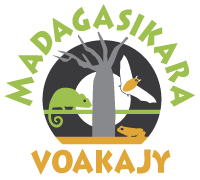These remarkable trees are an enduring image of Madagascar but there is growing evidence that populations are not enduring in the face of rising exploitation of bark products.
Six species of baobabs occur in Madagascar and nowhere else on Earth. We are working with people in the Menabe region of western Madagascar to improve the conservation and use of Grandidier's baobab Adansonia grandidieri.
This is an enormously important tree species, both for the region and the nation. Images of large baobab trees, lined up along roads or contorted into unusual shapes, are seen on many websites, posters and brochures that lure visitors to the island. A merchandise industry that sells scupltures, paintings, t-shirts and other itemswith baobab imagery to tourists has expanded in recent years.
Grandidier's baobab is also very important to the local people who live around dry forests in south-western Madagascar. Fruits are harvested and sold locally for direct consumption or are made into juice. Bark is stripped to provide materials for making rope and roofing, as well as medicinal tea. There is now concern that the traditional exploitation of bark products by local communities is under pressure from outsiders; tradition sees small sections of bark removed from lower sections of the trees over many many years whilst the newer approach sees the trees felled and all of the bark is removed.
This project is currently supported by:




